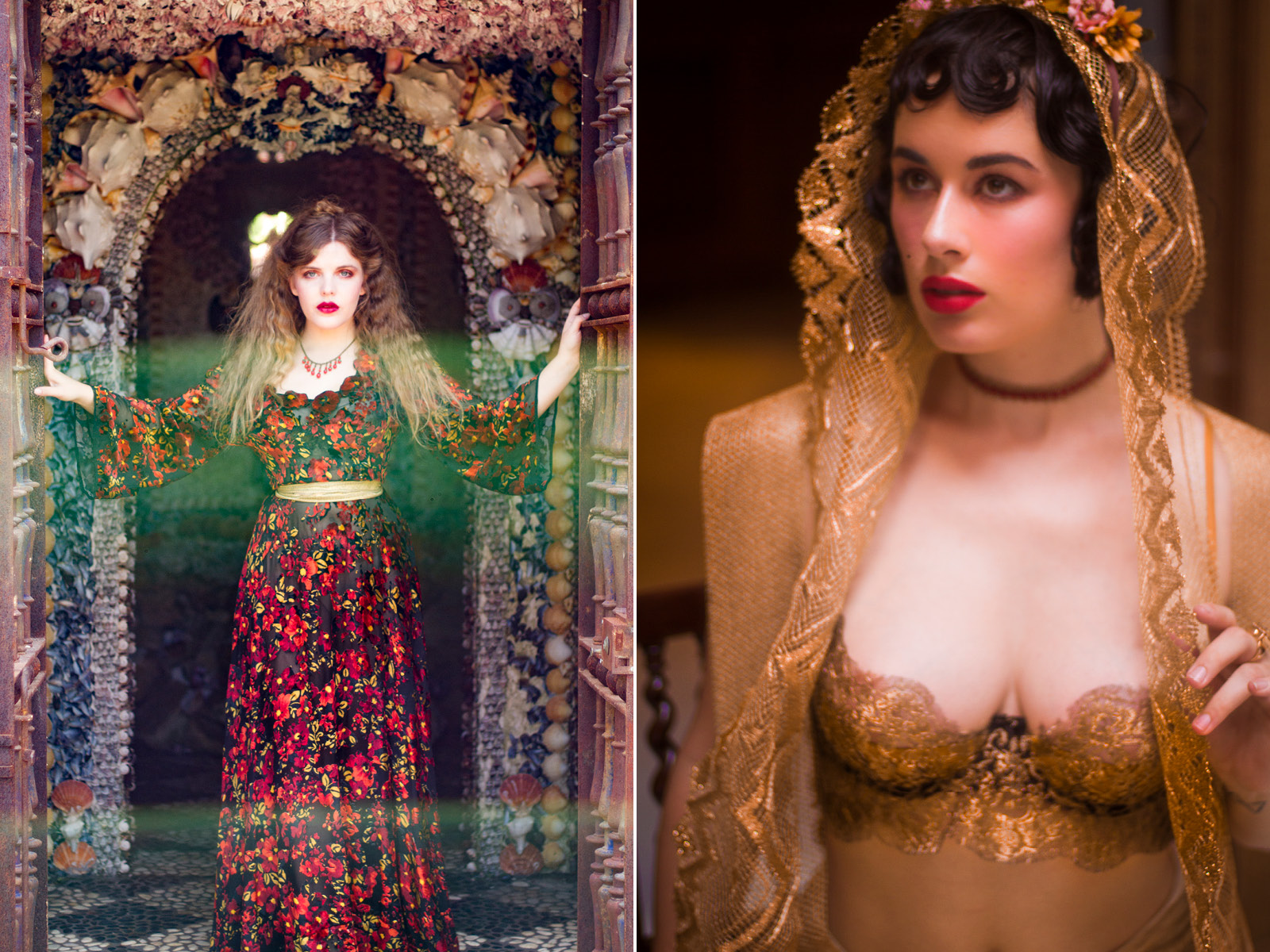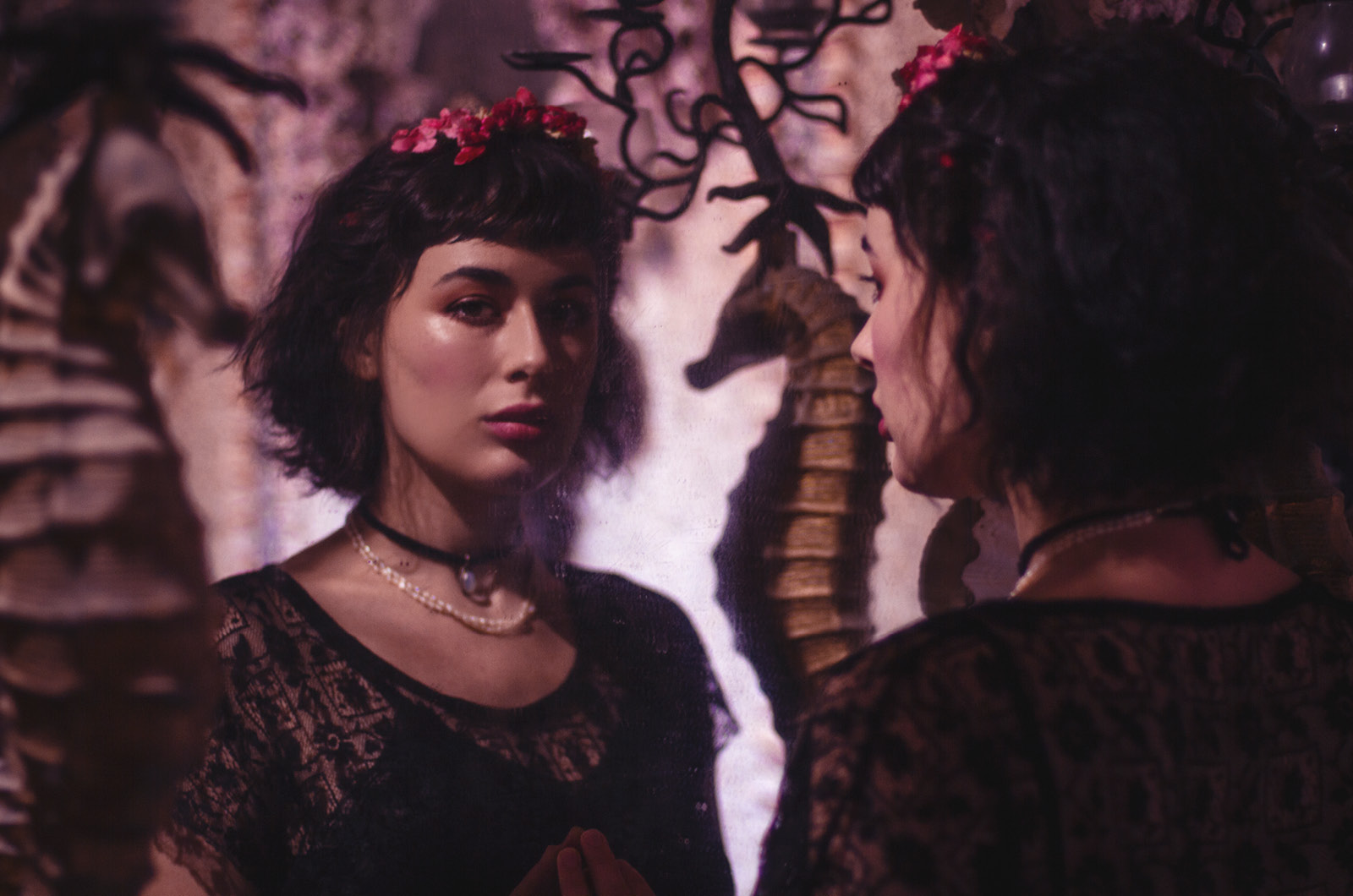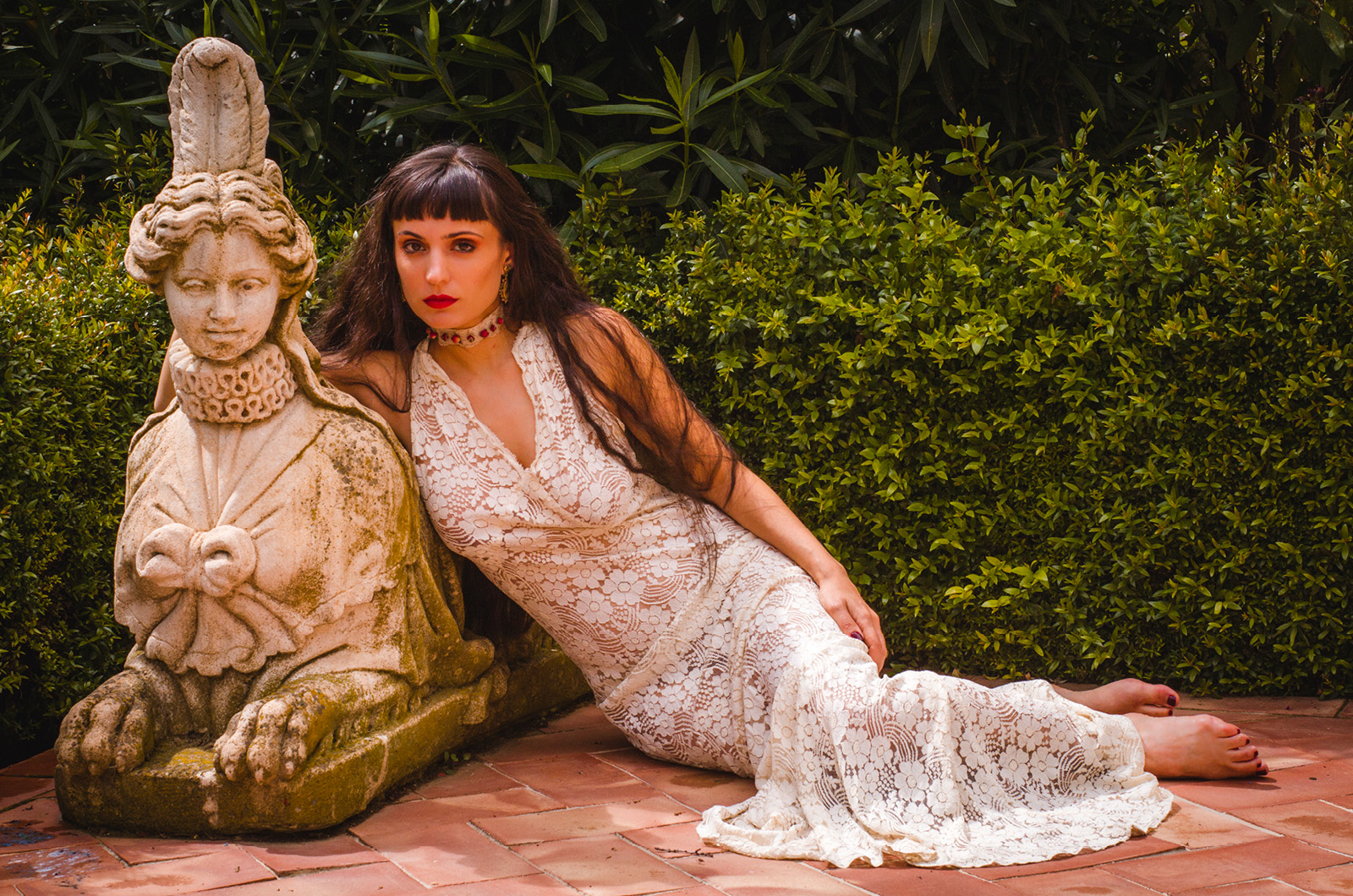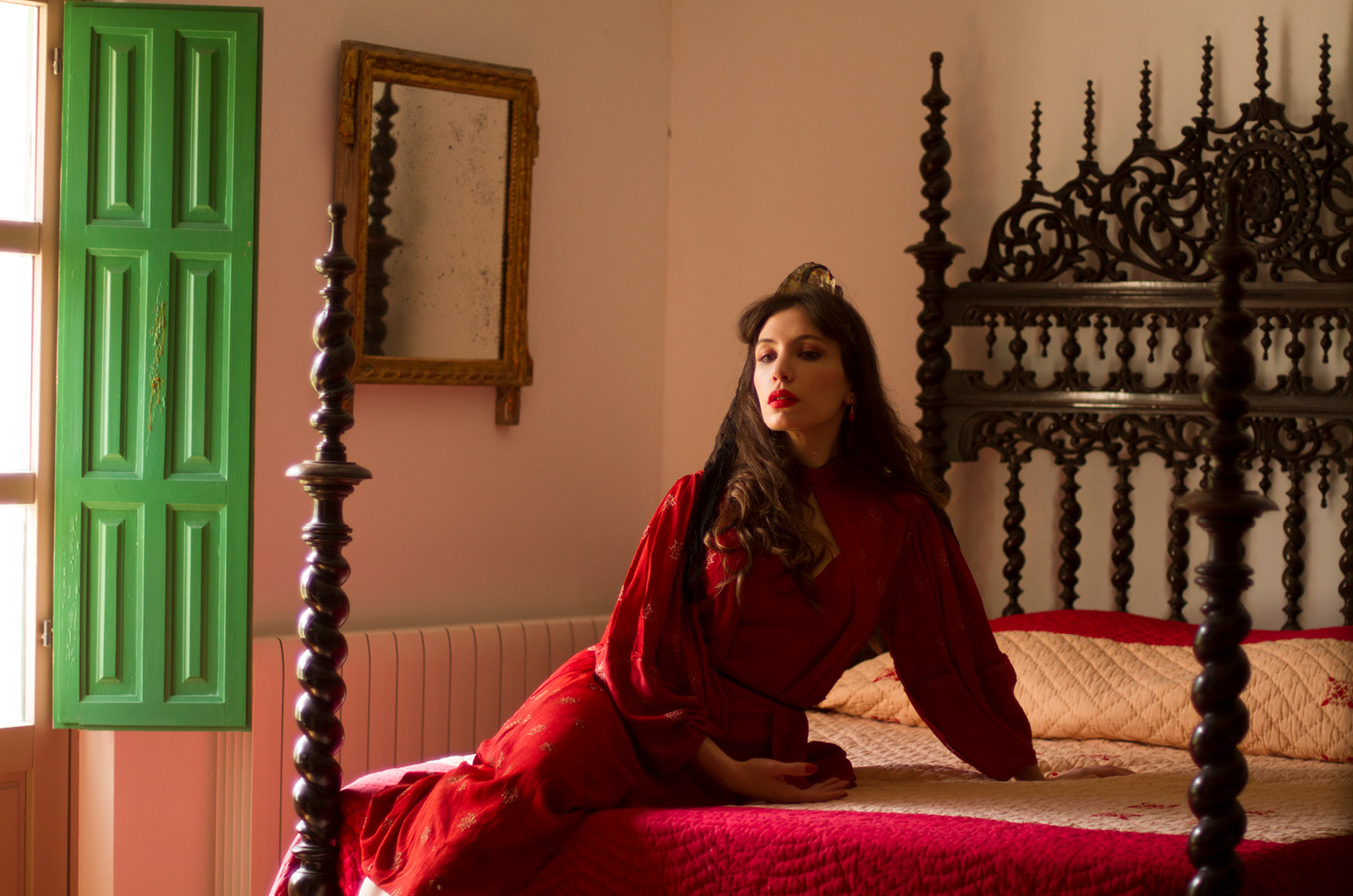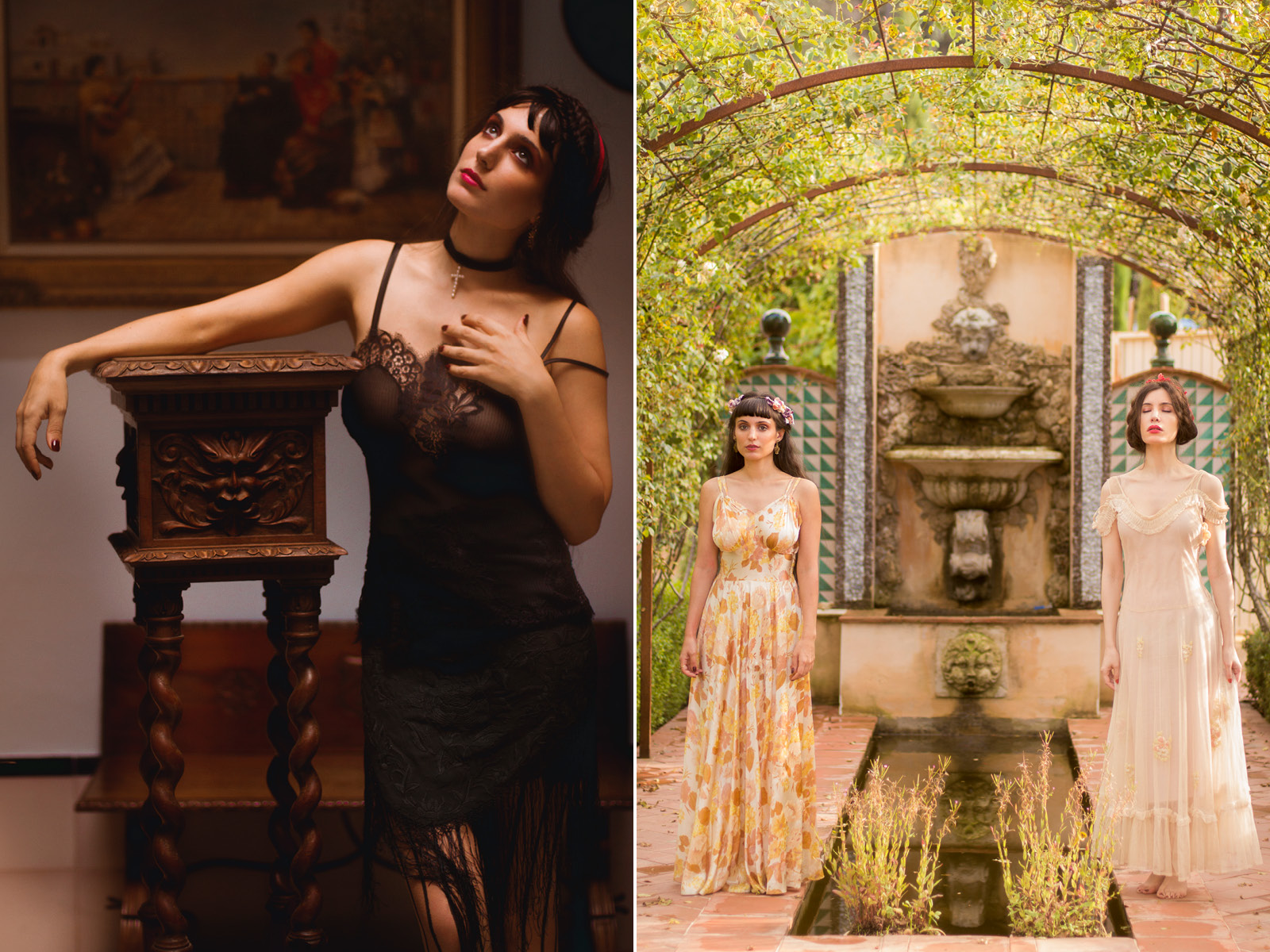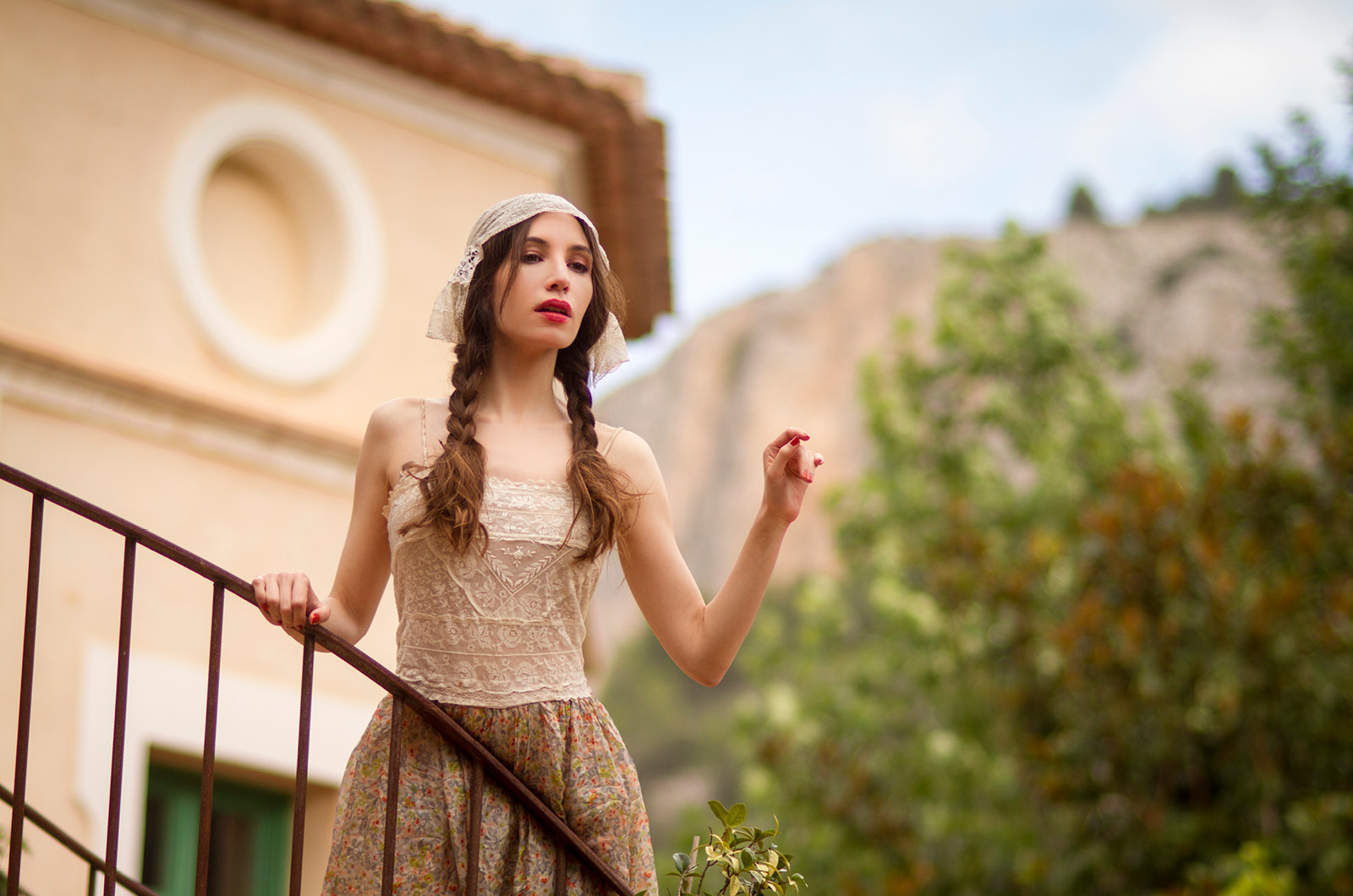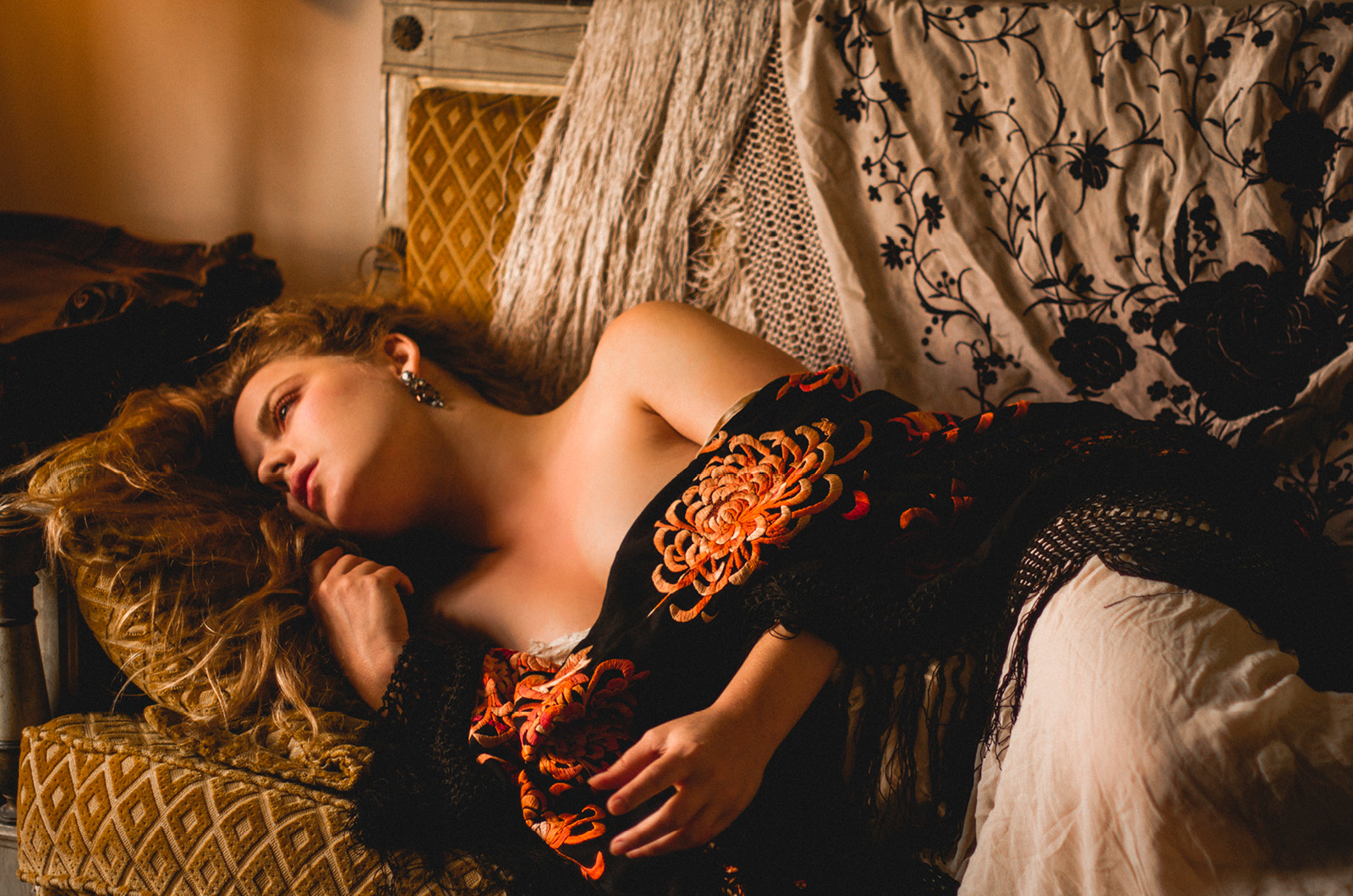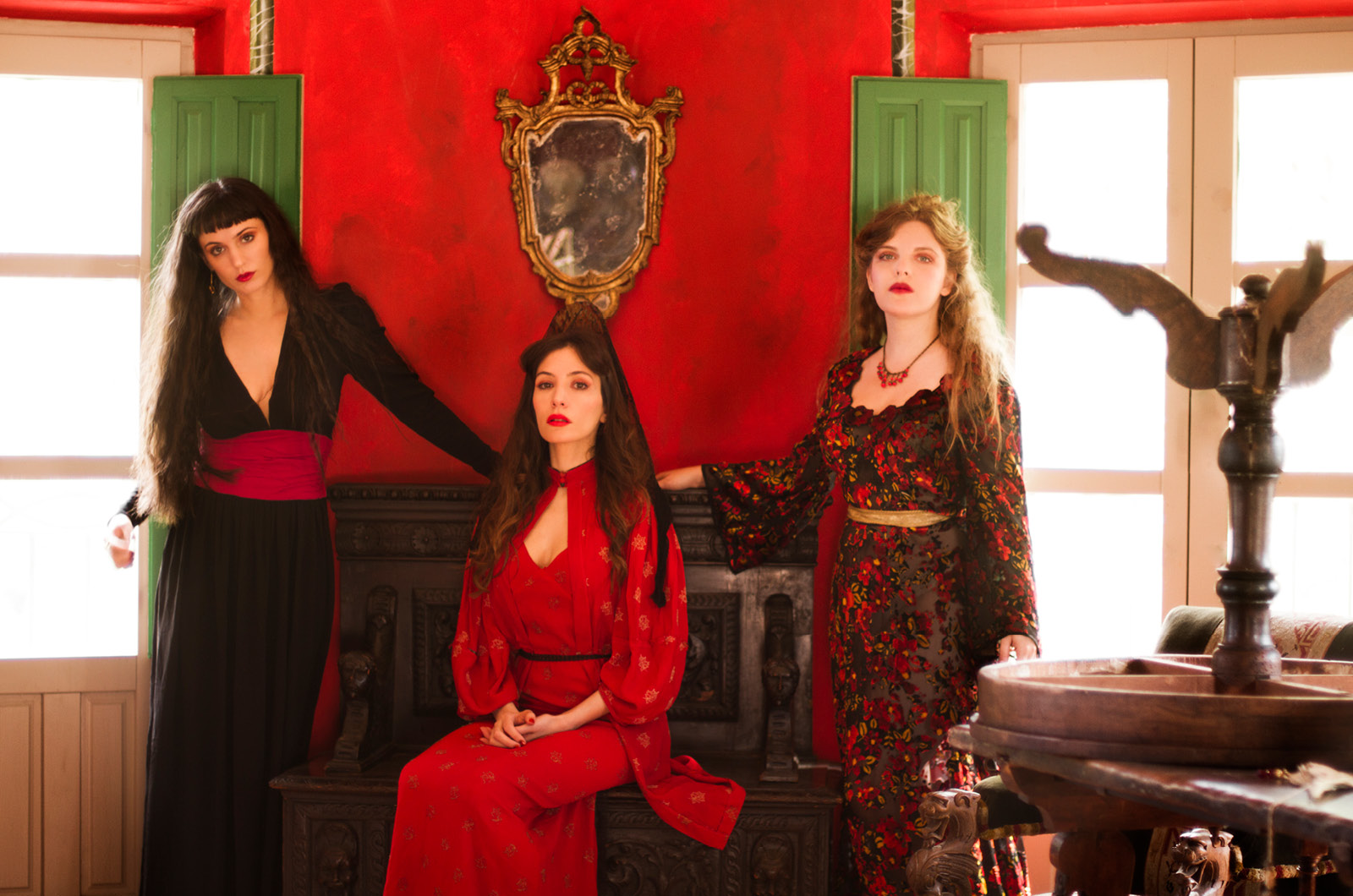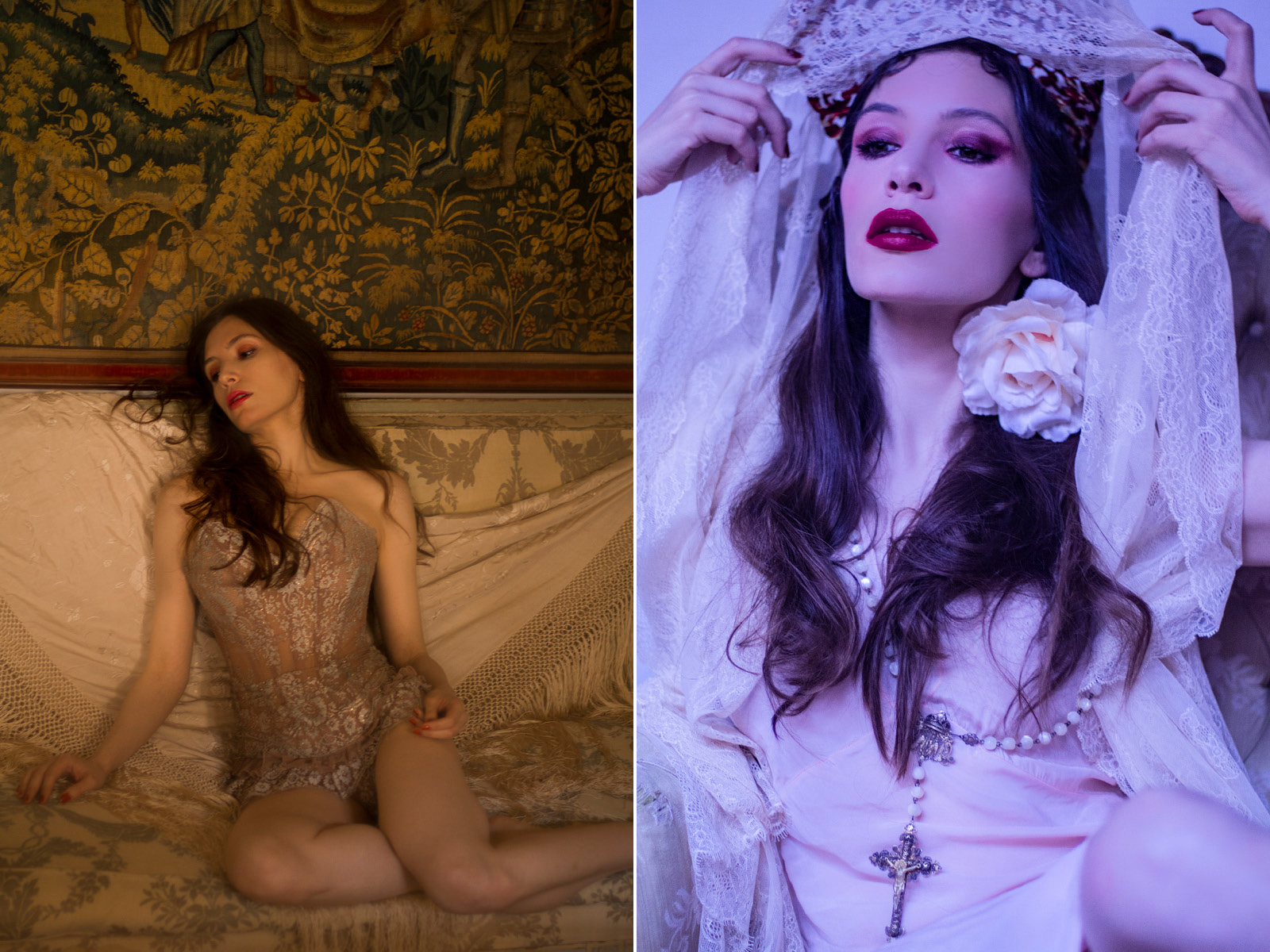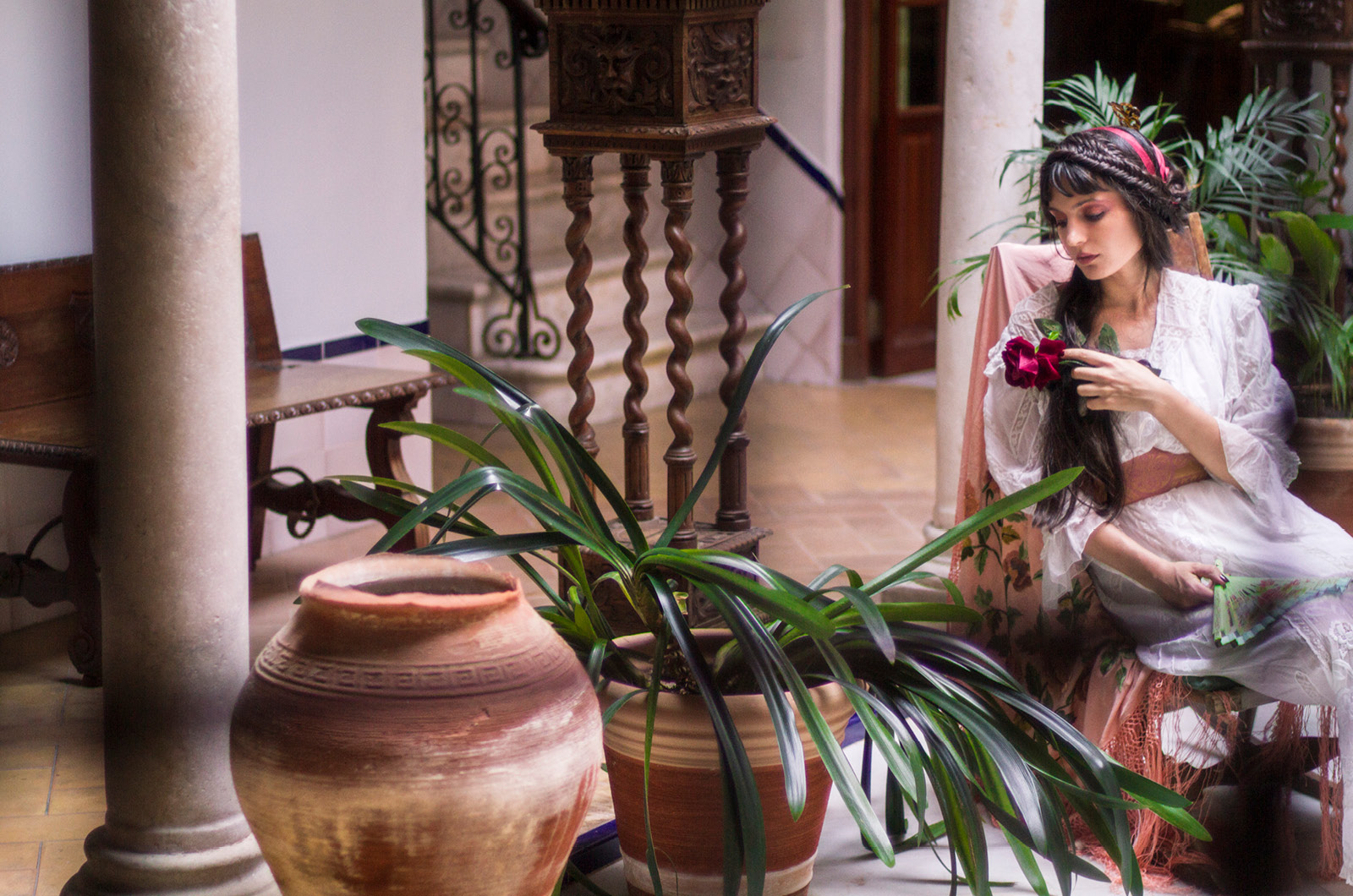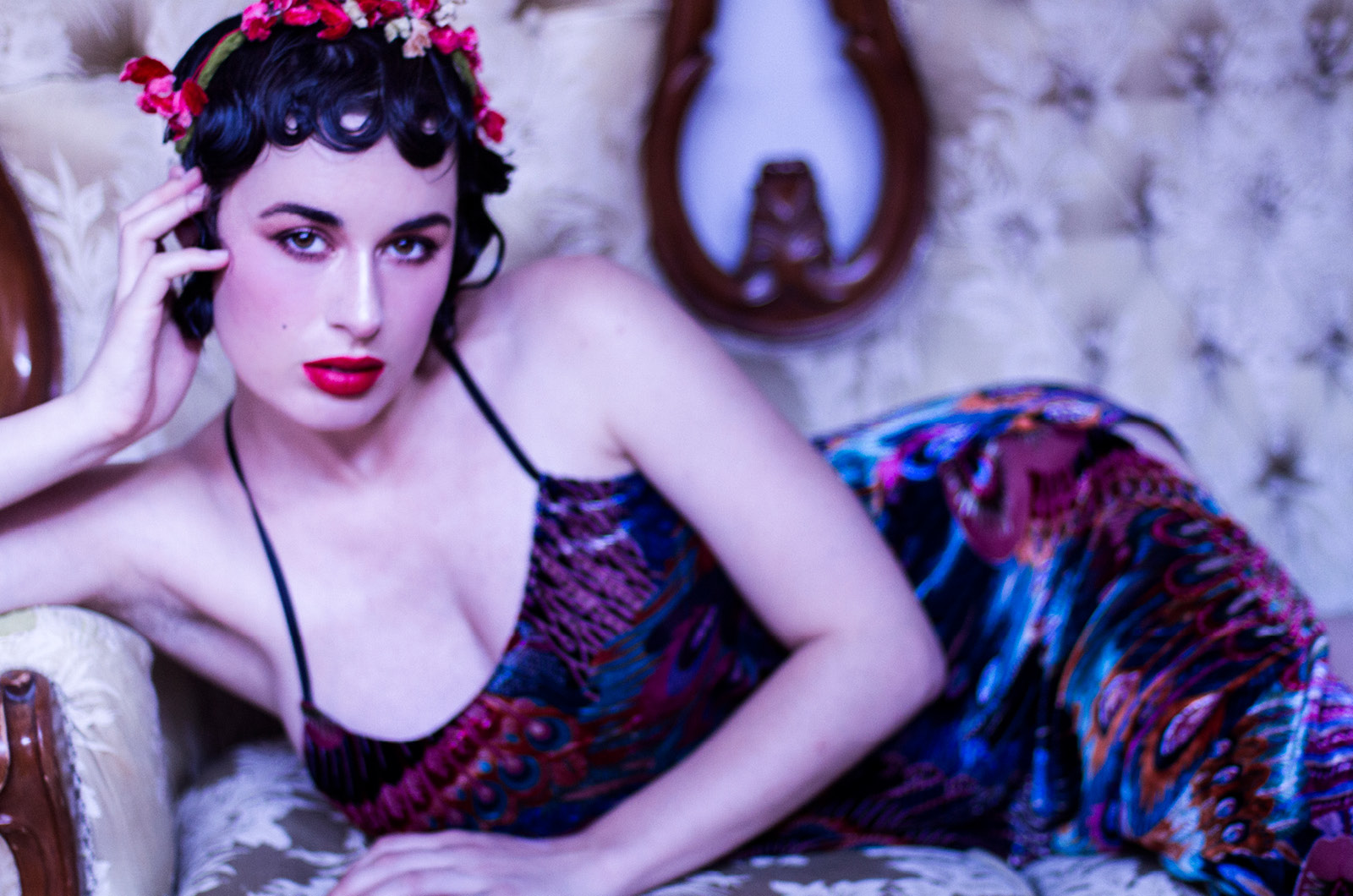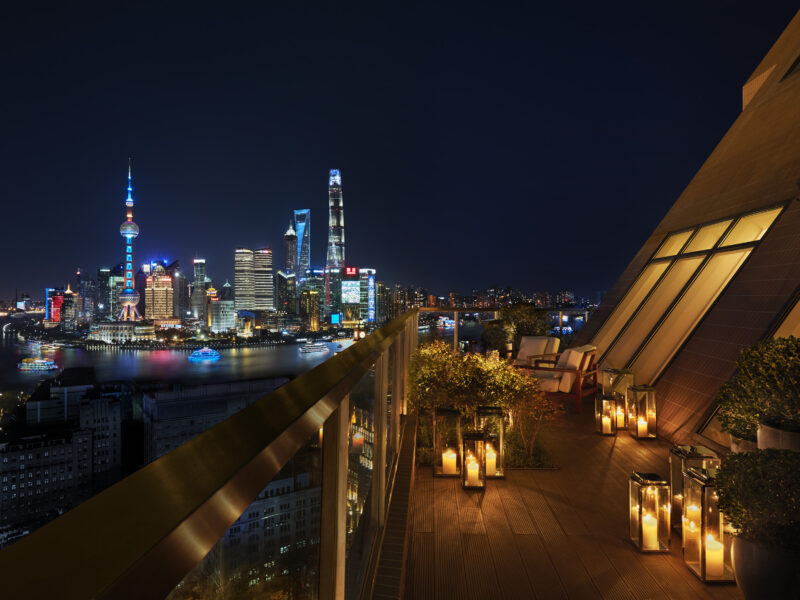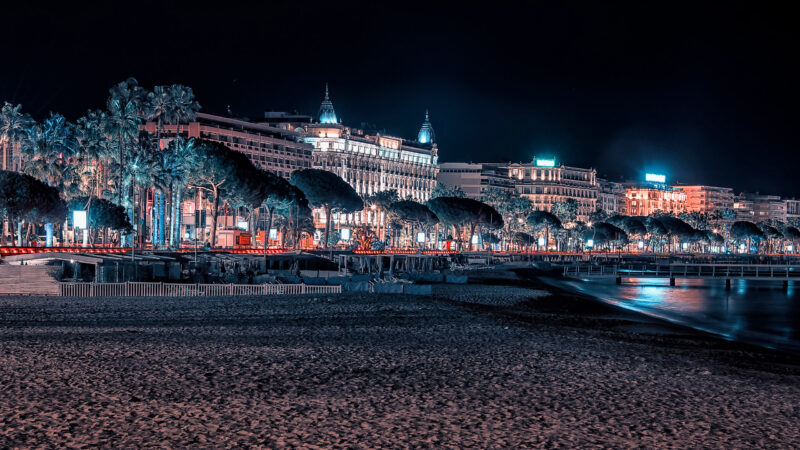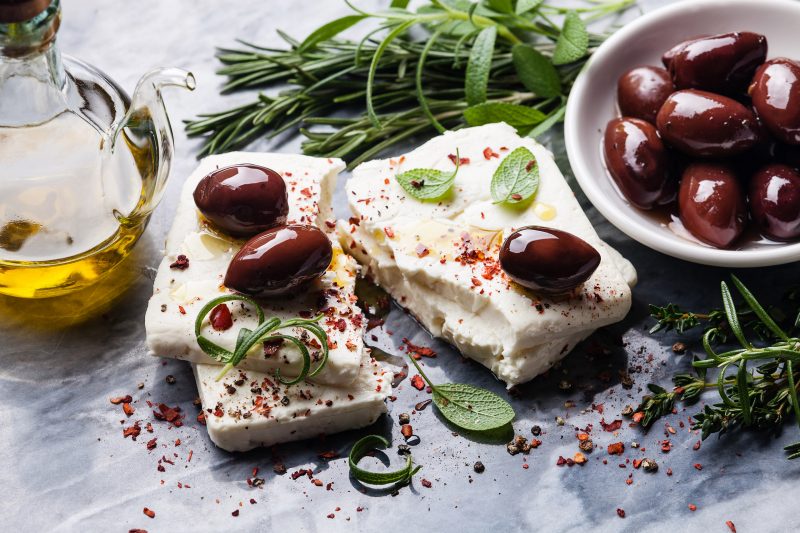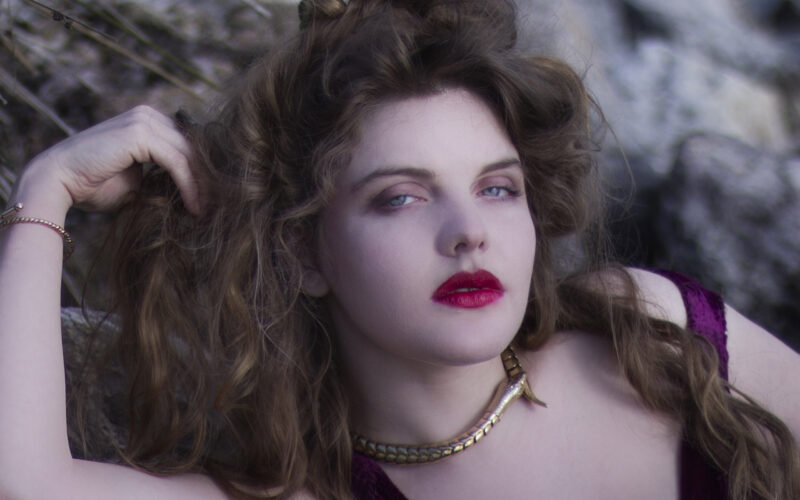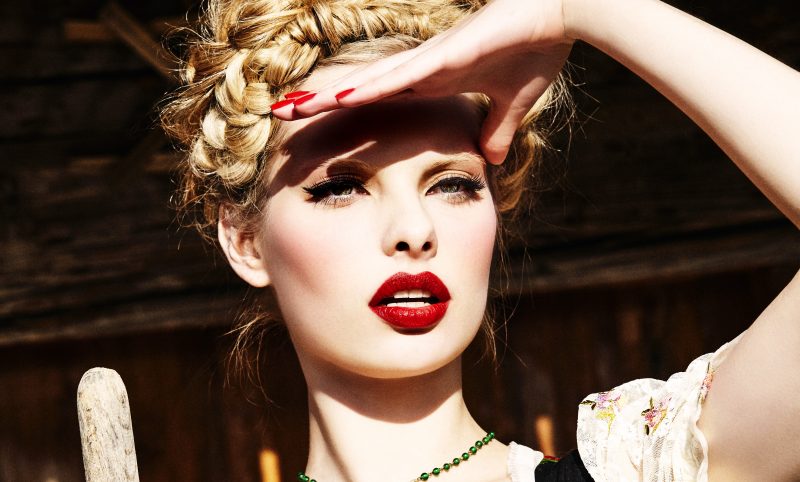article by GWENDA-LIN GREWAL
photography by SYRIE MOSKOWITZ
styling by LILLIAN LORRAINE
lingerie courtesy JANES VANITY
shot on location in VALENCIA, GRANADA, & SEVILLE, SPAIN
Models
ANA CORBI
OLIVE GLASS
SYRIE MOSKOWITZ
GWENDA-LIN GREWAL
A few weeks ago, I boarded a plane to Amsterdam, and woke up surrounded by oversized tea cups and windmills. Two hours later, I was on a flight to Madrid, which, unlike much of Spain, feels awkwardly urban with its industrial architecture popping out against the dwindling eve of art nouveau. In the middle of it all, is the Prado. I think it must be the greatest museum in the world, not just because it houses the wildest Hieronymus Bosch painting, “The Garden of Earthly Delights,” but also because of the Black Paintings of Goya, the piercing portraits of Velazquez, and the rapturous room of floor to ceiling El Greco. But this is all to come.
I first had to gather two of my girlfriends—Syrie Moskowitz, arriving from Cornwall, England, and Olive Glass, arriving from Los Angeles, California—to catch a train to Alicante in Valencia. We changed outfits on board, a debacle that dismayed the smorgasbord of travelers around us: three sleep-deprived women dropping heavy suitcases on each other, bobby pins flying, swapping dresses and seats, while primping with tiny compact mirrors. Thanks to the kind lady with hot pink hair and glitter ankle boots for smiling at us as we disembarked.
We were welcomed by a veritable Spanish Queen—a living brushstroke of Goya—our friend and native Spaniard, Ana Corbi, who borrowed her mother’s Volvo to charioteer us through the southern countryside. We started with dinner in a restaurant carved out of a grotto at a club in Alcoy called, “Circulo Industrial,” but which I must refer to as the “Secret Bee Society.” Our reservation was in the name of Ana’s grandfather, a since deceased member of the Secret Bee Society. The Bee building was a marvelous 19th century structure with a magnificent ballroom, a Caravaggio-esque poker lounge, and a library where I spied Spanish copies of Thucydides and Horace behind diamond-paned armoires.
After dinner, we drove through the night along a tiny mountain road, shepherded by our vampirically lovely host—mildly terrified at where she might be taking her three boisterous American compatriots. The destination was fantastical even in the dark: a lamplit 18th century palace, complete with chapel and courtyard. The walls sported signed handprints of Pablo Picasso and Jacques Cousteau. The rooms were filled with unabashed taxidermy and every manner of antique. And we were the only occupants.
We awoke to sweeping views of mountains and cliffs from every precipice and portico, not to mention gardens of roses, luscious fountains and pools, and a clandestine cave made entirely out of seashells. We would have liked to stay forever, and I don’t think Brutus would’ve minded. Brutus was the groundskeeper’s dog, a hound the size of Cerberus, who would perform circus tricks in exchange for a pat on his freakishly enormous head.
It is hard to know how we fit everything in the car. We had a wooden crate of wine, five suitcases, four purses, a steamer, a crown, a gargantuan peineta (which later became three peinetas), a tripod, and ourselves—four ladies, driving alone in a Spanish nether-realm, trying to make Granada by evening.
We entered old town Granada through the 11th century gate, and were straightaway greeted with a revelation. It seemed that one of the most famous bullfighters in Spain had advertised his private compound on Air Bn’B, and we had rented it. Indeed, inside the house, residing in an unlocked cabinet, we found his prized matador costume. We could not resist. We took it out. We ran our fingers over it. We tried it on.
Even still, our first day in Granada was marked by crisis and gloom. We had to stay home to await a misplaced FedEx box of lingerie. After almost being struck by lightning while swimming in the pool (which was flanked by imitation Greco-Roman statues) we resolved to comport our disgruntled selves to the Granada Cathedral—an incredible hydra of Gothic and Moorish architecture as arousing as the smell of orange blossom and hookah—then to flamenco and tango. The next day we arranged a tour of the Alhambra Palace (the sultan’s gardens would be the envy of the Queen of Hearts), followed by a trip to the ancient air baths. Meanwhile, the lingerie had disappeared in transit, and we had to banish the thought of it in favor of fortresses and steam.
The next morning, we left Granada before dawn to make it to a Seville flea market by noon—our appetites for vintage finery must’ve been whetted by foreign soil. We parked our car in an underground garage that was guarded by a troll with an unnamed pet parrot and a little dog like Dorothy’s. I was sure our valuables were in grave danger, but we left the car there, pawed through the flea market, and returned to discover that we were parked a mere twenty feet from our next abode. So, the parking-garage troll became our friend—with one or two indiscriminate grunts and a nod from the parrot—and we began to unpack the car.
It was then we received yet another surprise: we had rented an entire sixteen-bed hotel with an open-sky courtyard, complete with lightbox windows and interior palatial gates. Seville was an altogether new dream. We visited the Museo de Bellas Artes and the monastery of Santa Paula (where nuns grind their own turmeric and make marmalade). We tangoed beneath the stars. We adorned ourselves with brocade ribbons that we bought from a liturgical trim shop on one of the many cobblestone streets.
From Seville, we sped to Madrid through Toledo—another enchanting scenescape and home to El Greco. Finally, in Madrid, we spent two days methodically scouring every inch of the Prado and intermittently eating peppers that made us spontaneously combust. The prelude to our departure was the mesmerizing flamenco troupe at Tablao Villa Rosa. How sad we were to leave! But, while we were flying home to America, we received an interesting message: the missing lingerie had been delivered at last…to the bullfighter.
Olé.


